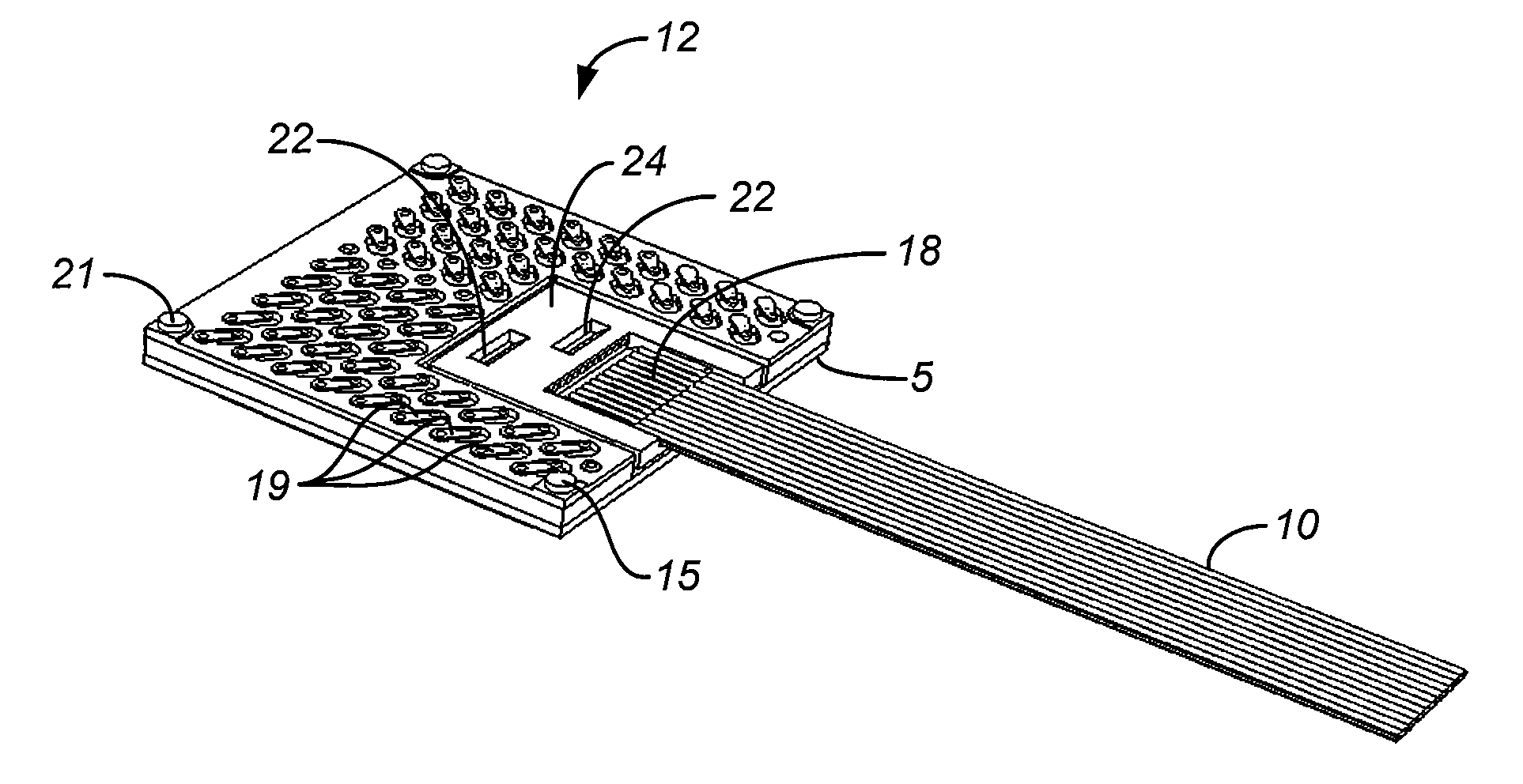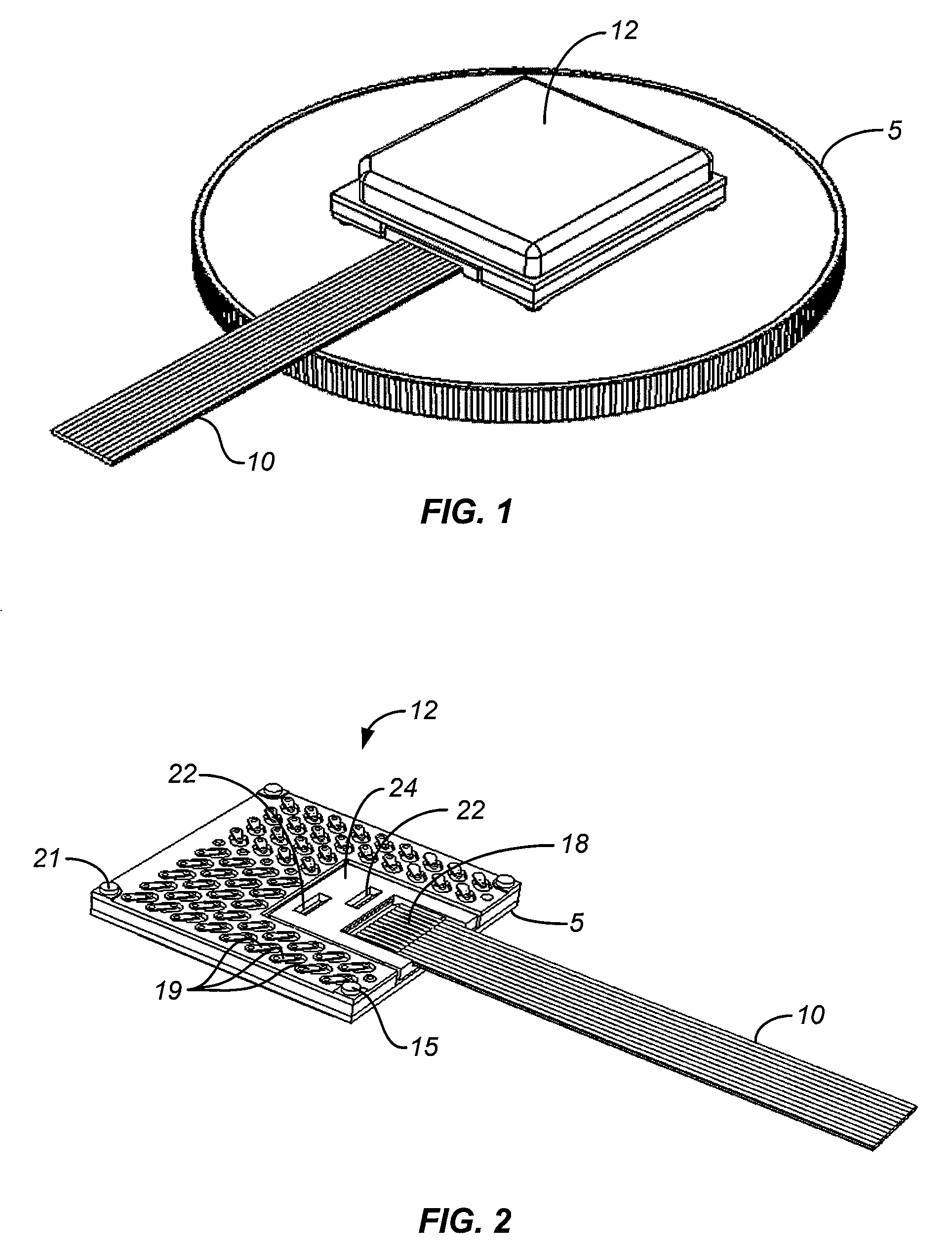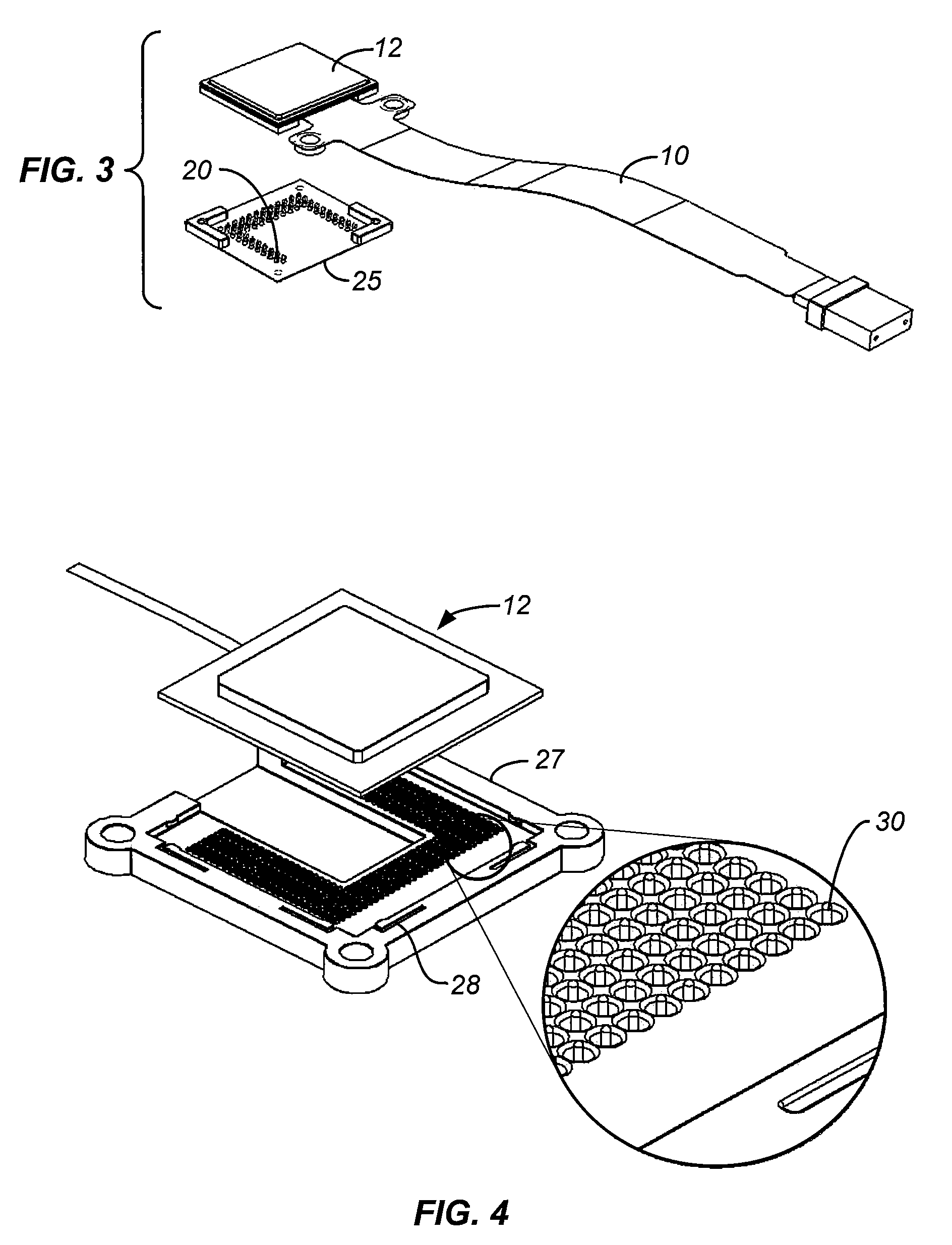Optical transceiver for computing applications
- Summary
- Abstract
- Description
- Claims
- Application Information
AI Technical Summary
Benefits of technology
Problems solved by technology
Method used
Image
Examples
Embodiment Construction
[0026]FIG. 1 is a top view of an optical transceiver according to a preferred embodiment of this invention. The transceiver is depicted on a U.S. quarter dollar coin 5 to illustrate the compact size of the transceiver. The transceiver functions to convert optical signals arriving on optical fibers 10 to electrical signals, and provides them as an output from electrical contacts on the lower surface of the transceiver (not shown in FIG. 1, but see FIG. 2). In addition electrical signals provided to the contacts are converted to optical signals and provided on the optical fibers 10. The device preferably operates as a parallel multimode transceiver with multiple ports, preferably six outputs and six inputs. Of course, different numbers of inputs and outputs, either balanced or unbalanced, can be used. The module 12 illustrated in FIG. 1 includes appropriate electrical terminals, enabling it to be directly mounted on a printed circuit board (PCB), for example, using compliant contacts ...
PUM
 Login to View More
Login to View More Abstract
Description
Claims
Application Information
 Login to View More
Login to View More - R&D
- Intellectual Property
- Life Sciences
- Materials
- Tech Scout
- Unparalleled Data Quality
- Higher Quality Content
- 60% Fewer Hallucinations
Browse by: Latest US Patents, China's latest patents, Technical Efficacy Thesaurus, Application Domain, Technology Topic, Popular Technical Reports.
© 2025 PatSnap. All rights reserved.Legal|Privacy policy|Modern Slavery Act Transparency Statement|Sitemap|About US| Contact US: help@patsnap.com



